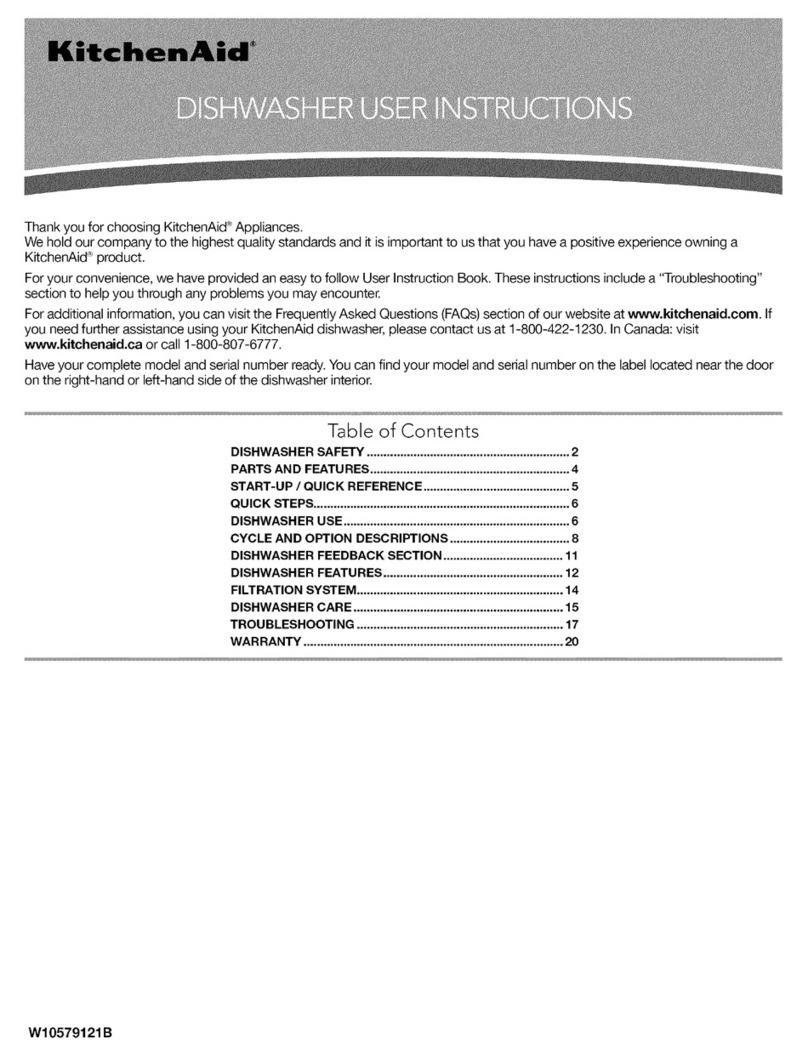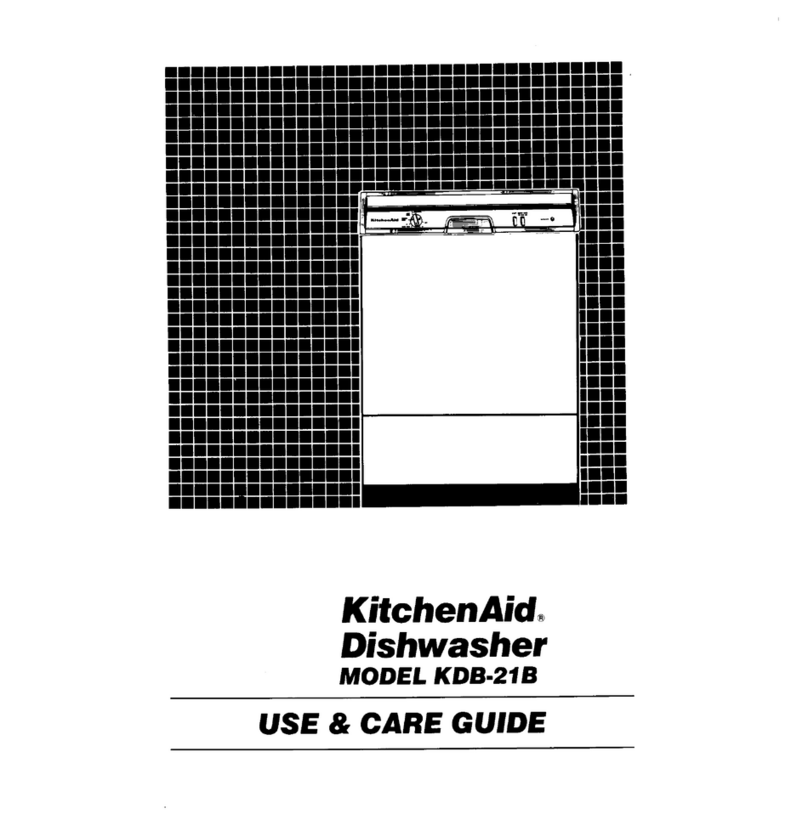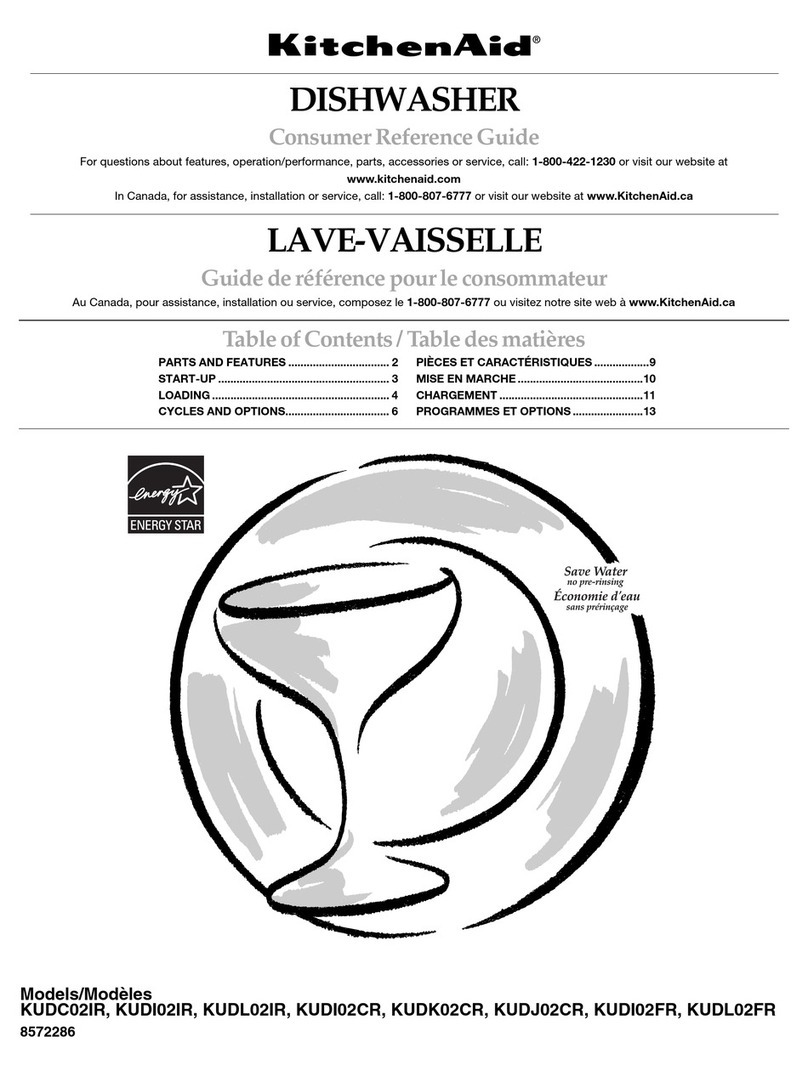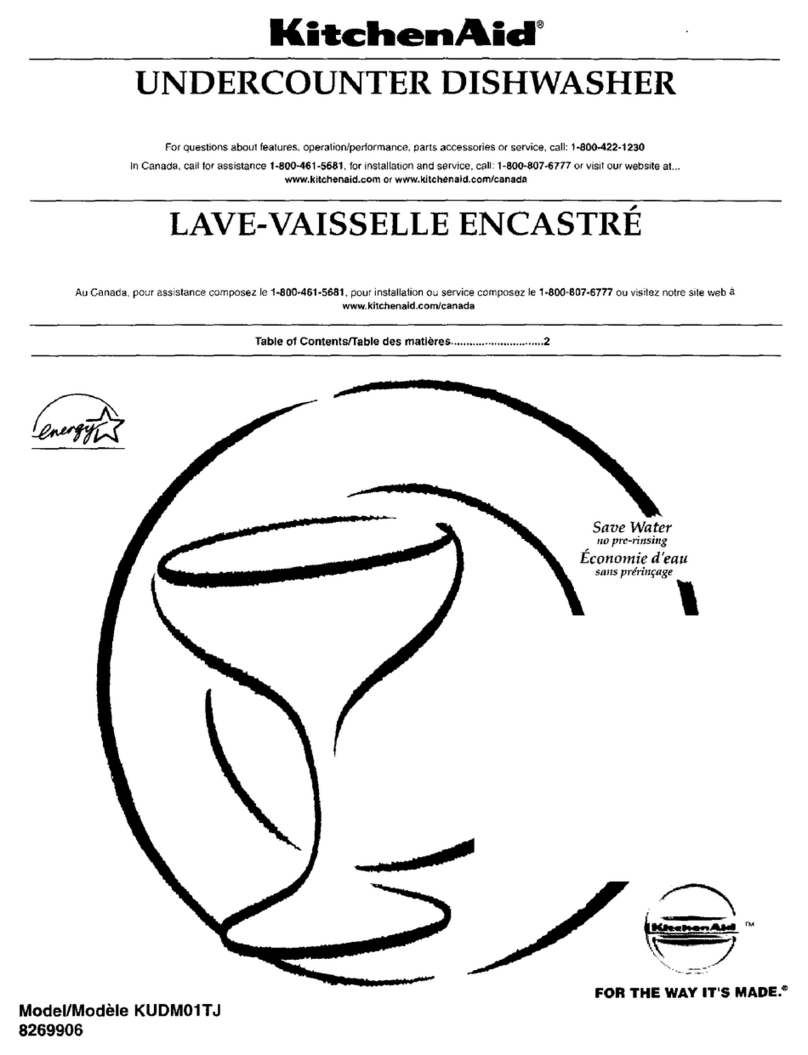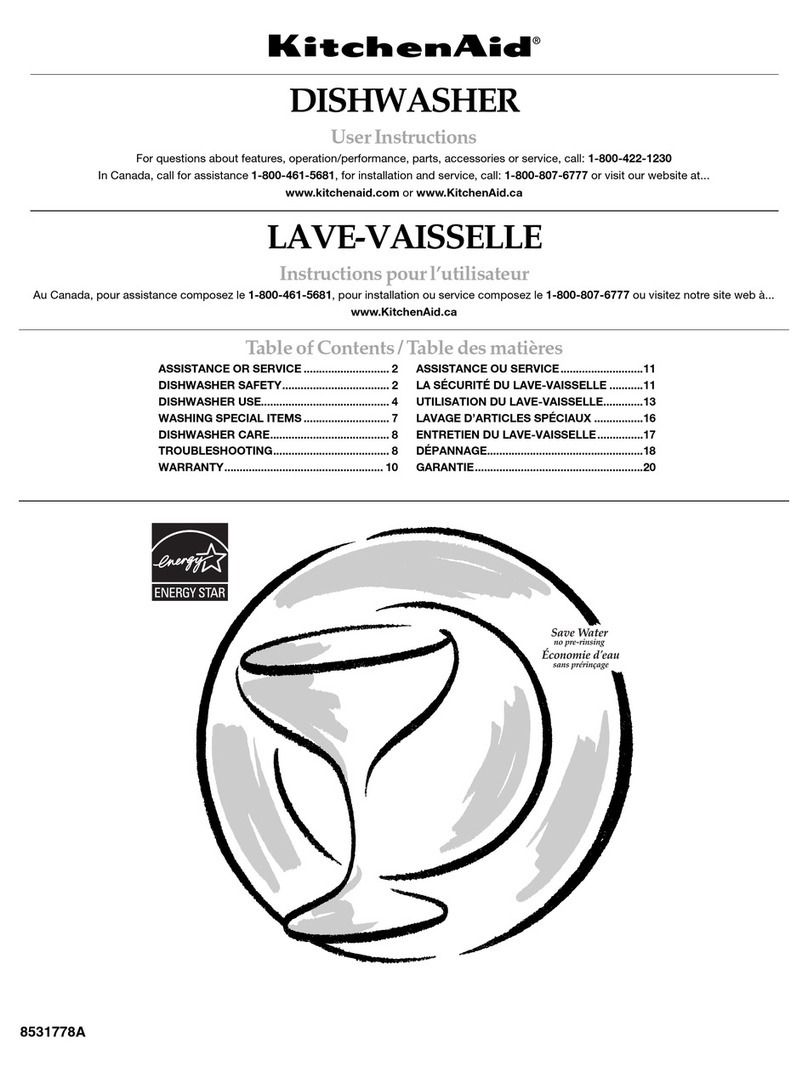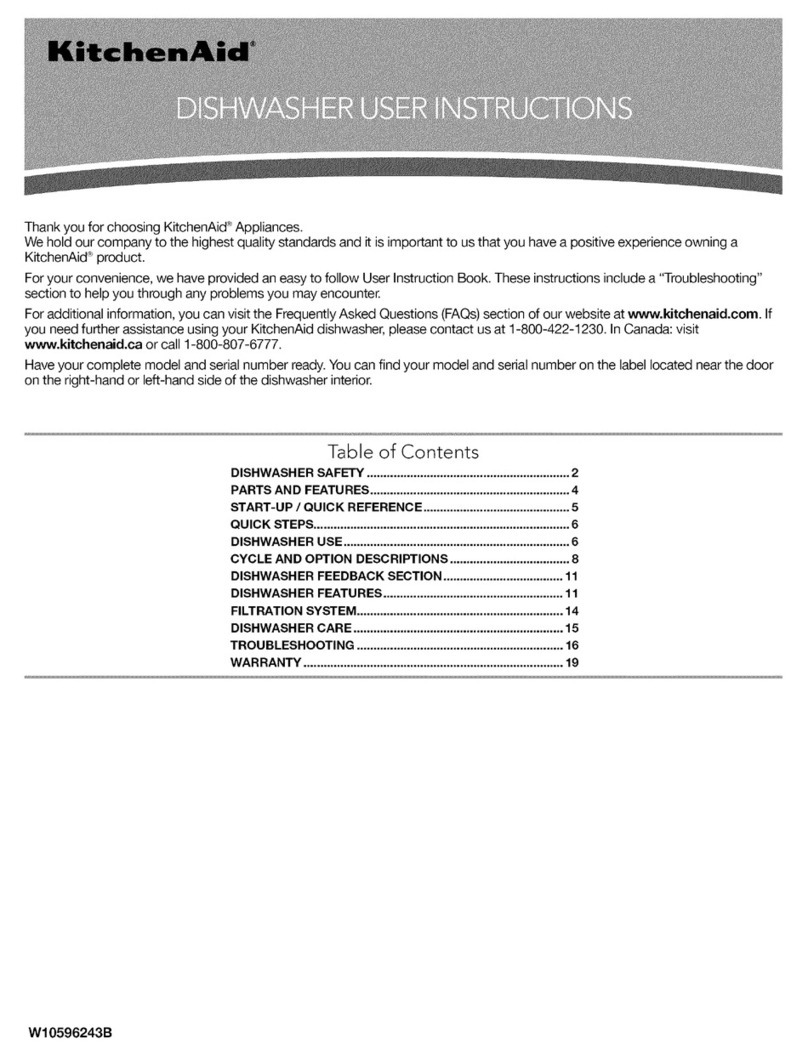
®
OPTIONS CAN BE WHAT IT DOES ADDED TIME TO CYCLE ADDED
SELECTED WITH WATER
TYPICAL MAX GALLONS
(LITERS)
Control Lock
®
or
Avoids unintended use of the dishwasher between cycles, or cycle and option changes during a cycle.
Toturn on Lock, press and hold CONTROL LOCK or 4 HOUR DELAY (depending on model) for 3 seconds. The Control
Lock light will stay on for a short time, indicating that it is activated, and all buttons are disabled. If you press any button
while your dishwasher is locked, the light flashes 3 times. The dishwasher door can still be opened/closed while the
controls are locked.
NOTE: You may need to disable Sleep Mode by pressing either START/RESUME or CANCEL, or by opening and
closing the door before you are able to turn Control Lock off.
Toturn off Control Lock, press and hold CONTROL LOCK or 4 HOUR DELAY (depending on model) for 3 seconds. The
light turns off.
NOTE: If your model requires you to press and hold 4 HOUR DELAY to lock the controls, the Control Lock LED will be
on or off to indicate if Control Lock is active or not.
CONTROL PURPOSE COMMENTS
To start or resume a f the door is Opened during a CYcleorthe power is interrupted the StartJResume indicator
wash cYCle flashes The Cycle will not resume until the door isClosed and START/RESUME is pressed.
NOTE" If the Start/Resume button is located on top of door, push door firm!y closed within
3 seconds of pressing START/RESUME, If the door is not closed within 3 seconds, the
StartjResume button LED wi!l flash, an audib!e tone will be heard, and the cycle will not
start.
To reset any cycle or
options during
selection.
To cancel a wash
cycle after it's
started.
Press and hold CANCEL/DRAIN to reset any control selections made.
See "Canceling A Cycle After Dishwasher Is Started" and "Changing A Cycle After
Dishwasher Is Started" sections.
Toturn the audible Press and h01dthe Hi:Temp scrub button foi3 seconds to turn the audible tones on or off.
tones on or off. Only audible tones for confirming button presses can be turned on/off. Important audible
tones, such as indicating a cyc!e has been interrupted, cann0t be deactivated.
t:eedback
CONTROL PURPOSE COMMENTS
w:iiillDII,:_c;_il;i,,iz:i The Cycle Status indicator clean indicatoi glows when a CYcle is finished.
• , • • Lghtsareusedtofo owthe ........
..... If y0u select the Sanl Rinse option, when the Sanl Rinse cycle !s f!nlshed,
progress of me a snwasner
, , _ , ., _. the Sanitized indicator g!ows, lf y0ur dishwasher did not properly sanitize
cycle Locatea on ire front
of ;he dish aslier for front your dishes, the light flashes at the end of the cyclel This can happen if the
I w
. , ,, ,; . , cycle is interrupted or the water could not be heated to the [equired
control moaels ana ocaiea tem-erature
on the top of the door for P !
................... hidden control models. The Clean and Sanitized lights go offwhen you open and close the door or
)ress and hold CANCEL
AThe Front Indicator Light or The light will be blue if the dishwasher is washing or rinsing. The light will
Single Exterior Light (A) be red when the dishwasher is drying. The light will be green to indicate
shows progress of your that the cycle is complete. If the Front Indicator Light is blinking, see
dishwasher cycle by color "Troubleshooting" section.
(for hidden control models
only).
The CYcle Status Display is The indicators Wi!l inform you if you are able to add a dish to the cycle afte r
used to follow the progress it has started. It wi!l a!so inform you if the dishwasher is washing, rinsing,
of the dishwasher cycle, and drying, complete, and/or sanitized. They will show whether the control is
to show other informationl locked and/or the delay oPtion is se!ected. A series of bars wi!! count down
(Avai abe on some models the duration of the cycle remaining from left to right. Each bar equals
instead of Cycle Status approximately 24 minutes of cycle length The bars will a!so count down
Indicator Lights)the delay feature from left to right, and the delay indicator wi!! be activated.
10

